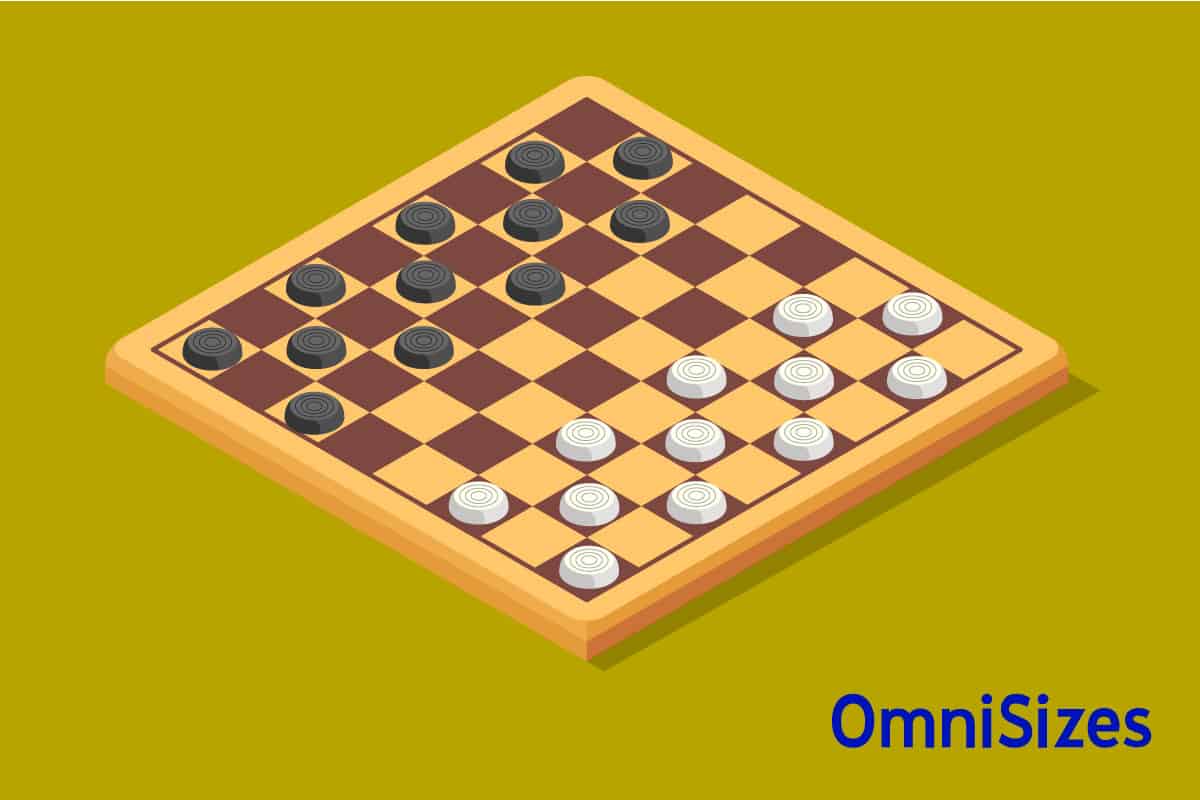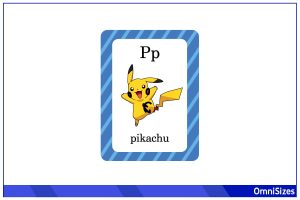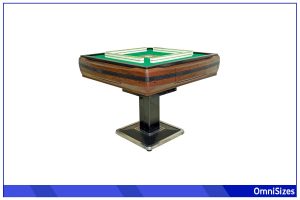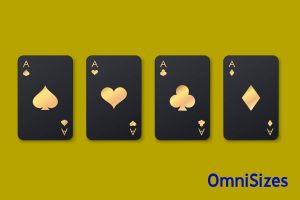Checkers, a timeless game that has captivated players for centuries, is more than just about strategy and skill. Checker board dimensions are seemingly simple grids, but there’s a bit more to this.
Checkerboard dimensions refer to the size of the board itself, typically measuring 8×8 squares, with each square usually around 2 × 2 inches or 5.1 × 5.1 cm. On such a board, the circular checker pieces measure 1.5 inches or 3.8 cm in diameter.
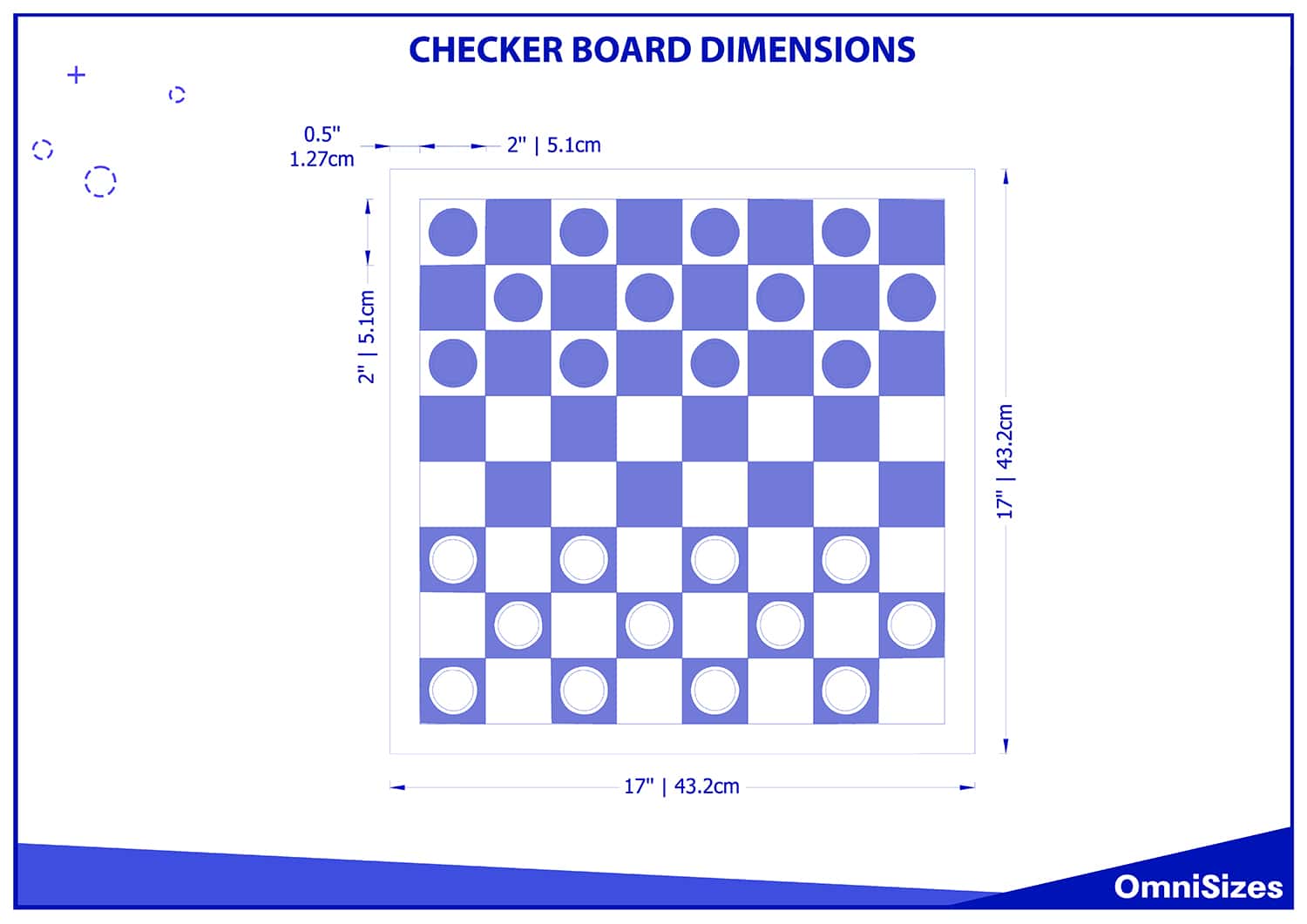
This guide will briefly cover the rich history of this board game, as well as go into deeper details regarding the measurements of a checkerboard.
Brief History of Checkers
Checkers, also known as draughts in many parts of the world, boasts a rich history spanning thousands of years. Archaeologists have discovered checker-like games in ancient Mesopotamian cities, dating back to 3000 BC. The game’s foundational concept of capturing an opponent’s pieces by jumping over them is a universal appeal that transcended cultures.
In ancient Egypt, a similar game called Alquerque was popular around 1400 BC. This early version was played on a 5×5 board, a departure from the modern 8×8 grid we’re familiar with. The Romans also had a variant of this game, known as “Ludus Latrunculorum,” which became widely played throughout the Roman Empire.
As the game migrated to Europe, it underwent several transformations. By the 12th century, a version of checkers was being played in France, called “Fierges” or “Ferses.” However, it was still played on the Alquerque-based 5×5 board. It was only in the 16th century that the game evolved to an 8×8 board in Spain, making it more akin to the game we know today.
Basic Checkerboard Dimensions
The checkerboard is the foundation of the game of checkers. It’s a square board, divided into smaller squares.
Standard U.S. Checkerboard Size
In the U.S., the official checkerboard size consists of 64 squares, arranged in an 8×8 grid. Each square typically measures 2 × 2 inches or 5.1 × 5.1 cm. This brings the entire board to 17 × 17 inches or approximately 43.2 square cm, including a half-inch margin on all sides.
Top Checkerboard Set: Pressman Folding Checkers Board
International Checkerboard Dimensions
While the U.S. standard is an 8×8 grid, international play, especially in Europe, sometimes uses a 10×10 grid, especially for a version of the game called International Draughts. This board has 100 squares in total, and each square is slightly larger than the U.S. standard, often measuring 1.5 × 1.5 inches or 3.8 × 3.8 cm. Consequently, the whole board measures around 15 inches or 38.1 cm on each side with the side margins.
Top International Draught Board: VAMSLOVE International Draughts Board
Square Size and Proportions
The size of each square on a checkerboard is consistent across the entire board. A standard square’s color alternates between two contrasting shades, usually black and white or red and black. This alternating pattern aids in gameplay by providing a clear visual demarcation for movement and capturing of pieces.
In maintaining the board’s proportions, the gap or border around the edges is kept minimal. This design consideration helps to maximize playing space and ensures that the focus remains on the game itself.
Checkerboard Material and Thickness
While the dimensions of a checkerboard are key to gameplay, the material of the board also plays a role in the game’s overall experience. Traditional checkerboards are made of wood, offering a classic feel and a satisfying sound when pieces are moved or crowned.
Modern boards, however, might be crafted from plastic, vinyl, or even fabric for travel versions. The choice of material can influence the board’s durability, aesthetic, and even the friction or slide of the checker pieces.
Relation Between Board and Checker Pieces
The harmony between the checkerboard and its pieces is fundamental to the game of checkers. This relationship dictates how players interact with the game.
Size Considerations
For seamless gameplay, checker pieces are meticulously sized to fit the board’s squares. Typically, the diameter of a checker piece is slightly less than the square it occupies. This design provides a margin around the piece, ensuring it can be easily moved without disturbing adjacent pieces.
On an 8×8 board, where each square measures 2 × 2 inches, the checker pieces are usually around 1.5 inches in diameter. On the larger 10×10 board, used in International Draughts, the pieces are proportionally smaller but still maintain that marginal space.
Piece Thickness and Stacking
The game’s dynamics require that pieces be “kinged” or crowned when they reach the opposite end of the board. This is typically represented by stacking two pieces. As such, the thickness of a single piece is 0.375 inches and designed to allow easy stacking within the confines of a square.
Weight and Material of Pieces
The material and weight of checker pieces contribute significantly to the tactile experience of the game. Traditional wooden pieces offer a sense of nostalgia and a satisfying heft. Modern pieces, however, might be made from plastic, resin, or even metal, each providing a distinct feel.
FAQs
1. Can I use a chessboard for playing checkers?
Yes, you can use a chessboard for checkers. Both games use boards with 8×8 grids. However, remember that a chess set has different pieces for various moves, while checkers uses uniform pieces. If you’re using a chessboard, simply grab uniform pawns or any other identical pieces to represent your checkers.
Top Checkers and Chess Set: AMEROUS Magnetic Wooden Chess and Checkers Game Set
2. How do I determine if my checker pieces are the right size for my board?
A good rule of thumb is to check if the diameter of your checker pieces is slightly smaller than the length of a square on your board. This allows the piece to fit comfortably inside the square with a small margin around it. If the piece overhangs or appears too tiny, it might not be the right fit. Ideally, you should have enough room to stack two pieces when one gets “kinged” without them spilling into adjacent squares.
